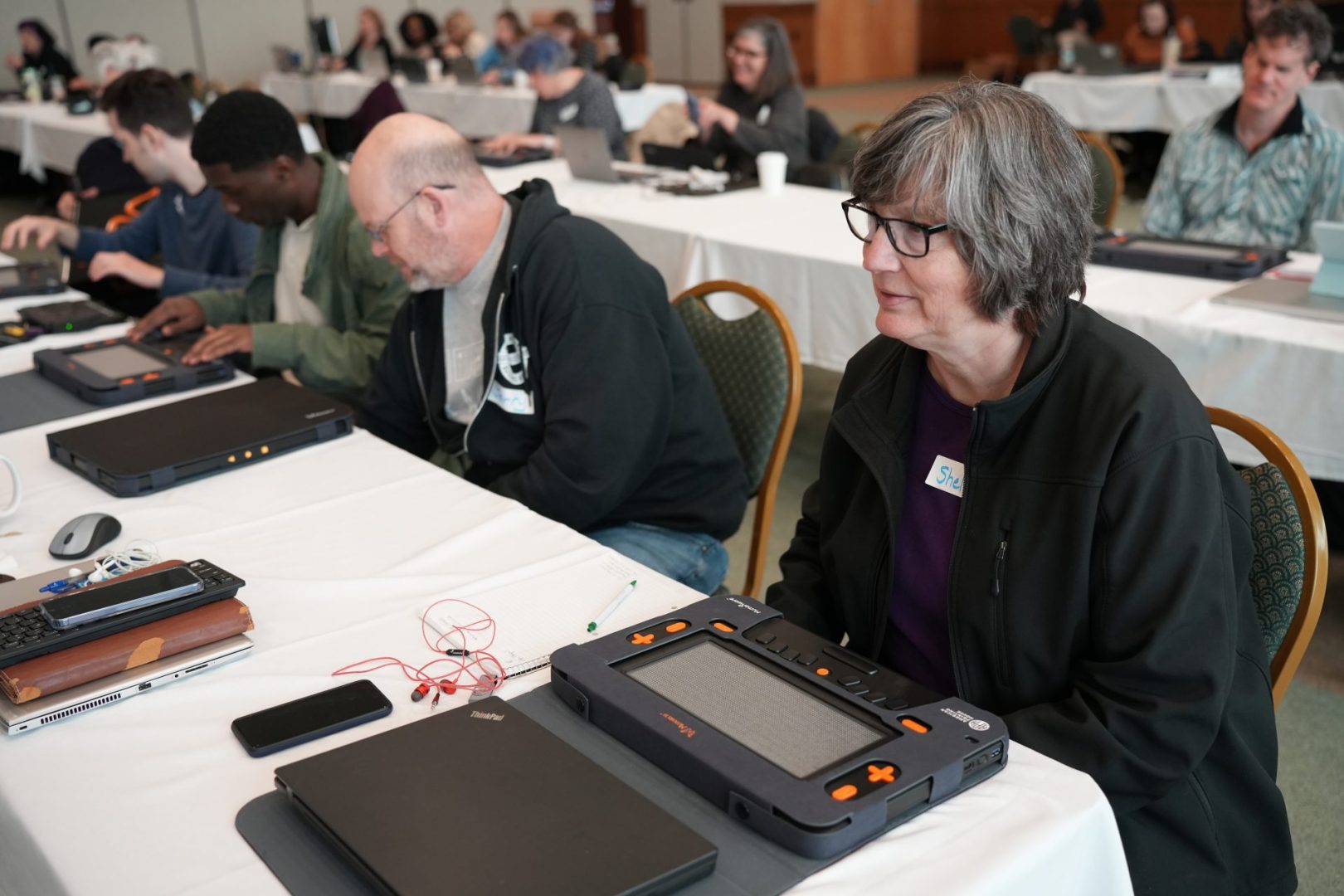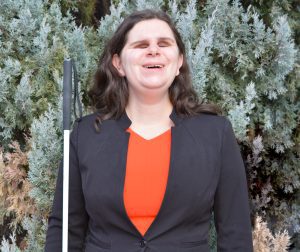To ensure gift delivery by 12/25, please place orders via UPS shipping no later than 12/17.
CloseFrom Dream to Reality: An Interview with Karen Anderson

Karen Anderson, Education Programs Coordinator at the National Federation of the Blind (NFB), says her first impression of the Monarch was “like a dream.” Something that had been talked about since she was in school, she knew the Monarch wasn’t going to be like past attempts, but it wasn’t until she saw the beta unit that she let herself get excited. “When we got the beta unit we were like, ‘Okay, this is real— it’s scalable, productionable, and actually functioning enough that they’re coming off of the assembly line.’ That’s a big deal,” says Karen.

Previous efforts at reaching the Holy Braille Dream hadn’t involved blind or low vision people from the beginning. “It was like we were a problem to solve rather than a community to build something for and with,” says Karen. From the beginning, the NFB put the Monarch in front of blind or low vision members across the country to get their feedback. “That’s what made the difference,” says Karen. “Being able to help with testing and then validate some of those choices is where our partnership has been valuable.”
One of the things she is most excited about is the tactile graphics. “Providing our students with earlier access and giving them more graphics is going to do AMAZING things for their spacial ability,” says Karen. On the Monarch, students can view a parabola without having to graph it manually themselves and then export and paste it into a document for their teacher. “Being able to put in an equation and have it graph and then be able to see the graph—that is mind blowingly cool! Our blind or low vision students still need to learn how to use Wiki Sticks and make those shapes themselves because the doing goes into learning,” says Karen. “But if all our sighted kids have to do is plug it into a calculator, then it’s really cool that our blind or low vision students can do that, too.”
Giving students the ability to read with multiple fingers on both hands, the Monarch allows them to move toward closer spacing so they can read more lines on a page and build up their reading speed. Although she was taught braille at a very early age, Karen says that as she got further along in school, she was pushed toward audiobooks rather than being encouraged to build her reading speed. The Monarch has changed that. “One line at a time isn’t fun. I have read books on the Monarch while I’ve been beta testing, and I don’t remember the last time that I just read a braille book for fun. I can feel my reading speed and fluency rising again because I’m reading more on the Monarch. I think that’s going to be true for a lot of students because they’re going to have more braille at their fingertips.”
Karen’s hope for the Monarch is that it will give students the opportunity to learn to love to read. They can now download reading materials from a variety of different platforms such as BookShare and NLS. “All of the research shows that if it’s something you want to read, you’re going to read more, which is going to build your reading speed,” says Karen. “Having easy access to those is going to be a game changer. Having it on multiple lines of braille—that’s going to be the thing that continues to turn the tide toward more braille literacy.”
Earlier and easier access to textbooks is the biggest way Karen sees the Monarch helping students in the classroom. “Our blind or low vision students deserve the opportunity to be able to read their textbooks the same way that our sighted students do.” She is hopeful that they will get more textbooks in braille and be expected to put up with being read to, less.
As someone who oversees programs that teach braille, Karen believes the Monarch will promote braille literacy because more students will be able to use devices like it in the classroom. “APH has done a nice job of making sure there are teachers that know how to use the Monarch and ensure that we have some solid training materials out there. That’s going to have an impact,” says Karen.
Karen is most proud that the Monarch is a device implemented and developed with blind or low vision people at the center. “It’s been a real pleasure being a part of the NFB and getting to be a part of this partnership. I’m proud of that and hope it continues in future technology among other things. I hope other companies learn from this and recognize the importance of having blind or low vision people at the heart of it from the beginning.”
